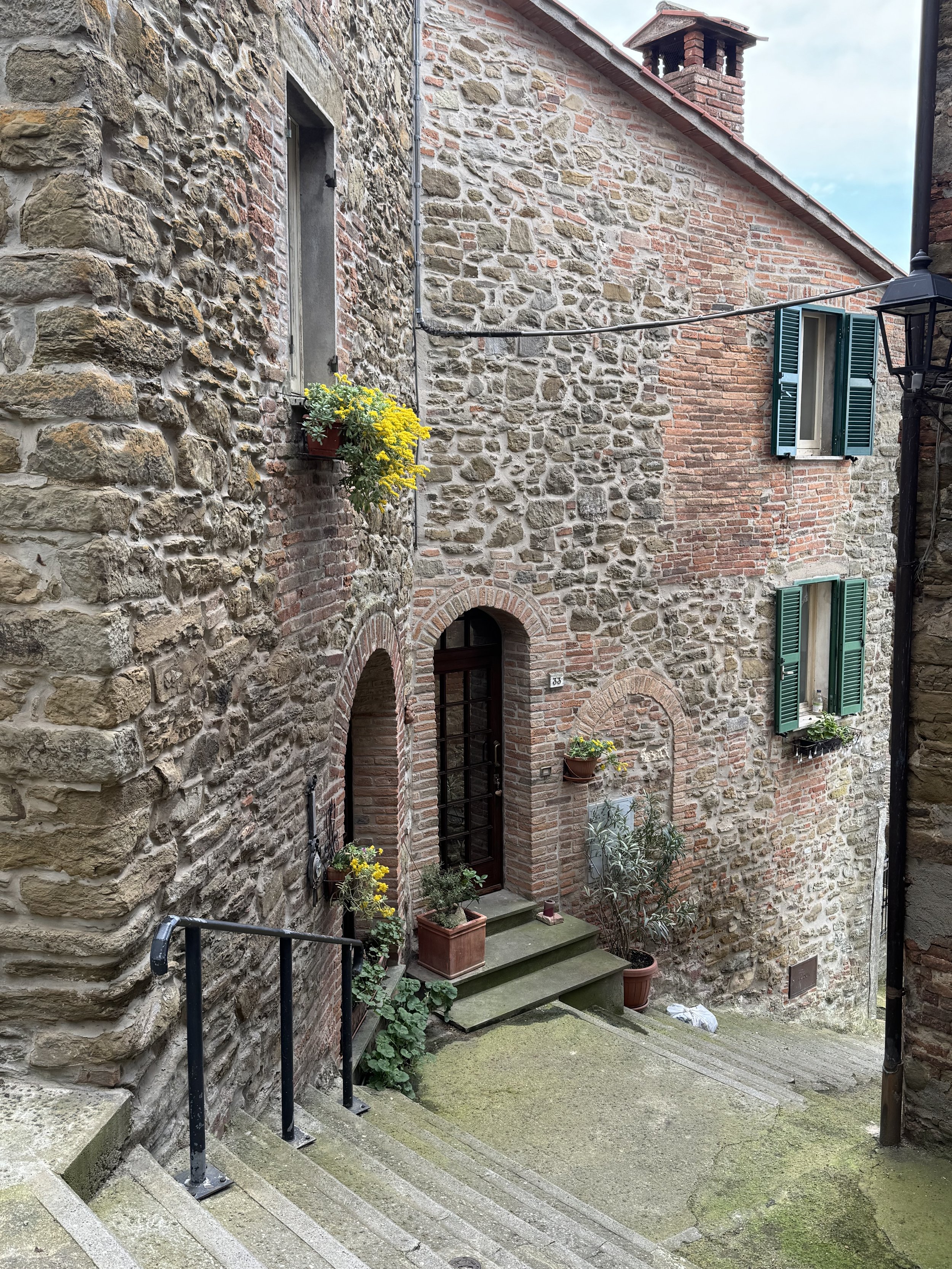One Day In Panicale
With so many fascinating places to visit in Italy, what exactly drew me to Panicale, a hilltop village in the Umbrian Province of Perugia?
As so often happens when choosing a destination in Italy, it was the confluence of several things. A seed was planted years ago when a fellow student at Lucca Italian School named it as her favorite place to spend time in Umbria, one of the Borghi Piu Belli di Italia (Most Beautiful Villages in Italy) situated high above the shores of Lake Trasimeno.
Panicale’s Medieval center, one of Italy’s most beautiful villages
Then, last year, I began to watch the British TV series Signora Volpe, set in Panicale. The scenes shot in the village drew me in and made me want to see it in person. Lastly, there was the Ruzzolone. This historic competition, with roots going back to the Etruscan period, takes place on Pasquetta, the day after Easter. I had to see it!
And so a plan took shape to spend Easter week in Umbria, with a day trip to Panicale on Pasquetta (Easter Monday) to see the Ruzzolone and explore the town. It wasn’t hard to find a friend who wanted to join me.
Panicale is a hill town, with steep streets meandering up and down through the village.
Panicale is an ancient hamlet with beginnings dating back to the Etruscan period, centuries BC. The more “modern” city is Medieval, with walls from the 13th century and a well-preserved Medieval streetscape.
Just inside the Porta Fiorentina lies Piazza Umberto I with its 15th century Travertine well. The well figures prominently in the TV series Signora Volpe, as the place where a trio of older women sit to chat. On the day I visited, it was a place where children played, people lingered, and visitors posed for photos.
Piazza Fiorentina with its 15th century pozzo (well)
The square is ringed with cafes and restaurants, and our afternoon began with a wonderful lunch at Il Gallo Nel Pozzo (The Chicken in the Well) as we soaked up the atmosphere of Panicale. After a post-lunch macchiato we were ready for the afternoon’s main event.
And what a fun afternoon it was! The Ruzzolone began just outside Porta Fiorentina where a crowd gathered to watch the giocchiatori (players) get ready for the annual Pasquetta rolling of the cheese.
The wheel of cheese is wrapped with a leather strap attached to a wooden handle which is used to launch the cheese down the course.
The competition, played by groups of village men, involves a wheel of Forma del Piave (a hard cow’s milk cheese) wrapped in a leather strap. A wooden handle is used to launch the cheese down the hill, often at significant speed. To win, the player must get the wheel of cheese to the bottom of the course with the fewest pushes. This may sound easy, but the wheels tend to roll off course, bounce off the stone walls (bystanders are warned to watch their shins lest a wayward wheel of cheese cause an injury), or roll off course and down the ravine.
The Ruzzolone begins along this street just outside one of the town’s gates.
The first launch took place to much cheering (on this day it was “Paolo, Paolo” for whom the crowd cheered) and then the participants raced down the hill to see where their cheese stopped and to give it another push. The crowd follows, or at least some of them do. Others stay at the top of the course, socializing and sipping free wine.
The winner earns bragging rights and gets to keep the cheese. Should it get smashed in the process, everyone gets a piece. After the official competition ended, visitors were invited to try their hand at launching the cheese down the hill. After that, a huge chocolate egg was smashed, something all the kids gathered for. Everyone gets a taste of chocolate. And then they celebrate.
Pasquetta is a national holiday in Italy, a day known for picnics and fun with friends after the solemn period of Lent and the celebration of Easter. For me, Pasquetta has never been more fun than when watching the Ruzzolone in Panicale.










